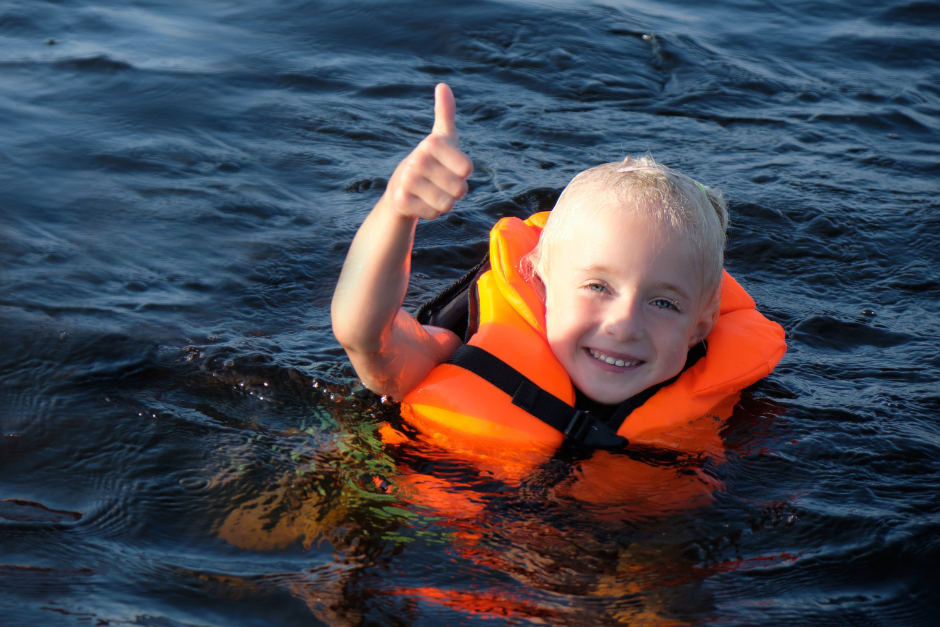| By Ginny Clay, TSS Operations Manager
To me, the most important message you should take away from National Safe Boating Week each year is: WEAR YOUR LIFEJACKET.
In March, I, as the Flotilla Commander, for U.S. Coast Guard Auxiliary Flotilla 170-01-05, had the privilege of helping members from the USCG Marine Safety Detachment in Ketchikan, Alaska to teach the KIDS DON’T FLOAT Program. Between the members that volunteered and the MSD personnel, we helped get the message out and normalize the importance of life jackets to approximately 305 young people over three days, during six sessions, and in 14 classes.
The training goals included teaching kids about the effects of cold-water immersion, life jacket laws, how to choose the correct life jacket and the importance of wearing it.
We worked with students on selecting the right life jacket, putting it on correctly, and raising awareness about who should always be wearing one while on the water – which is anyone under the age of 13, according to Alaska State law.
We then talked to students about the effects of cold water on the body in a very short time and why life jackets are so critical to saving lives. Students about the three stages of cold-water immersion, which happen over a span of 15 minutes:
1. Cold Water Immersion
- Cold Shock Response- when someone first falls into the water a person may gasp, hyperventilate experience heart rhythm, and have blood pressure changes.
- It takes approximately 3 minutes to subside. If a person is not wearing a life jacket during this time, there is a higher risk of drowning.
2. Cold Incapacitation
- Within the first 10 minutes of immersion, blood vessels in your legs and arms will constrict, this will cause numbness and fumbling. Making it harder to do things like put on a life jacket, summon help, etc. During this time, you must prioritize and perform the most important survival functions (make a plan). If a person is not wearing a life jacket during this time, there is a higher risk of drowning.
3. Immersion Hypothermia
- Core body temperature is 95 or below.
- During this time the person must stay positive, and continue with their plan. Activate any visual distress signals. Minimize movement by keeping arms and legs close to the body. Without a life vest, you are in extreme danger of drowning at this point.
Students were taught the 1/10/1 rule of time spent in cold water and survival:
- Within one minute – Wait for hyperventilation to subside (let your breathing slow) and try to calm yourself.
- Within 10 minutes – Prioritize and perform meaningful activities (get a life jacket on, call for help, scope out the area).
- Within one hour – You only have one hour of useful consciousness (longer that an hour in cold water and your survival rate is minimized)
To illustrate these concepts to students, we involved them in several activities like having them immerse their arms in cold water for 30 seconds and then put on their life jackets or pretending to be on a boat and pulling their life jackets out from under their seats and getting them on. They also learned about sizes and how to buckle and tighten life jackets. They even had a life jacket fashion show! By the end, our students came to the consensus that it is best to always be wearing your life jacket around water.
If you are interested in Safe Boating Week you can go to the Safe Boating Campaign website.
And, remember, the BEST LIFE JACKET IS THE ONE YOU WEAR

